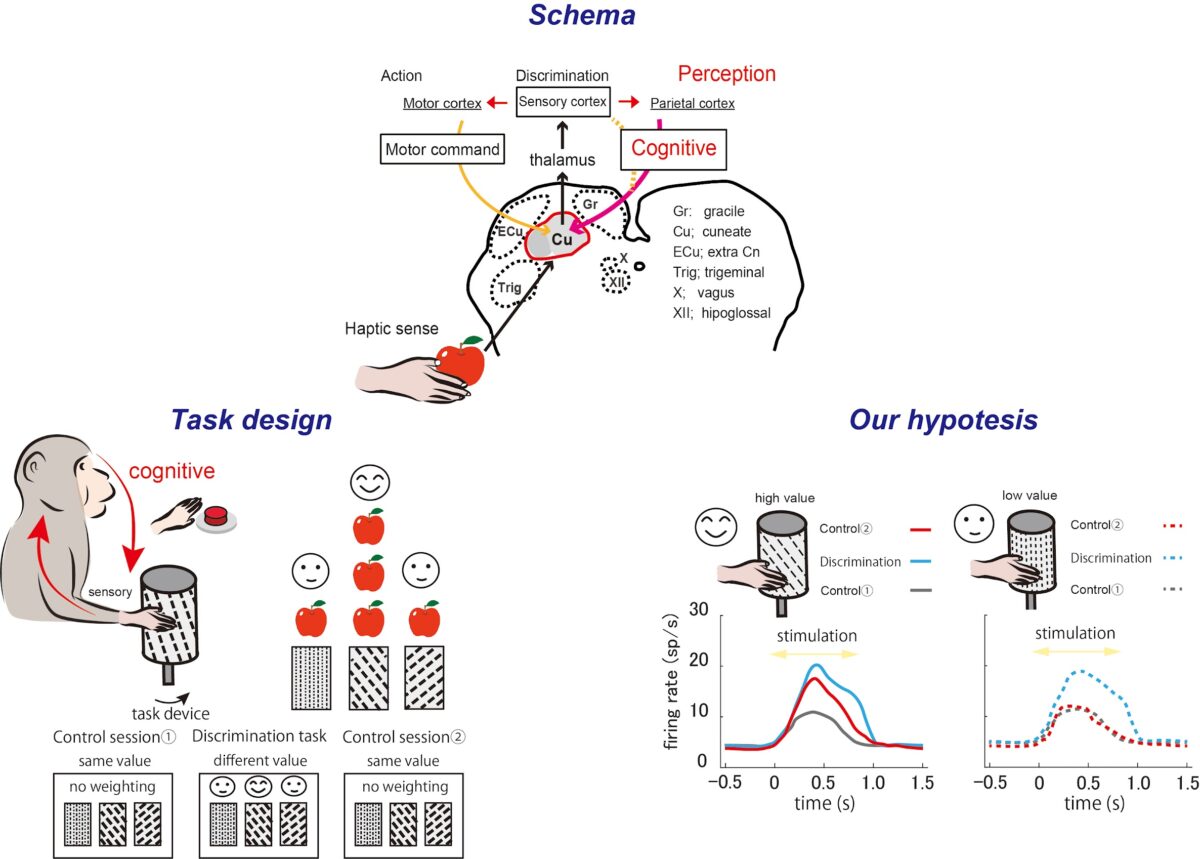D02-20 Tactile perception on the basis of cognitive information and its underlying neural mechanisms

We perceive the stiffness, texture, and weight of objects based on the sensory information from muscles and skin that is received through motor actions. At this point, the sensation of touching an object varies depending on cognitive factors such as personal experience and its value. For example, the sense of touch from a doll you played with as a child is a sensation that only the doll’s owner can have. Our sense of touch is therefore influenced by the cognitive aspects mentioned above, in addition to its material properties. However, it remains unknown how our brain processes sensory information according to these cognitive factors.
This study focuses on the cuneate nucleus, the first processing site for somatosensory signals in the central nervous system, and aims to elucidate the neural mechanisms that generate a sense of touch according to cognitive signals, such as the value and memory of an object.
